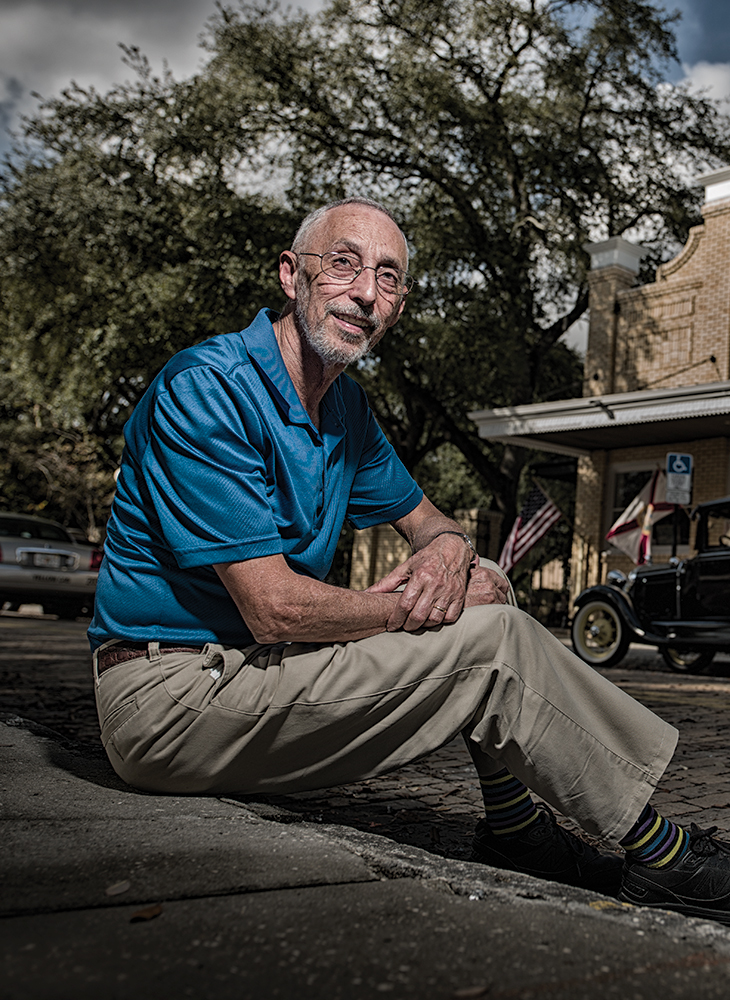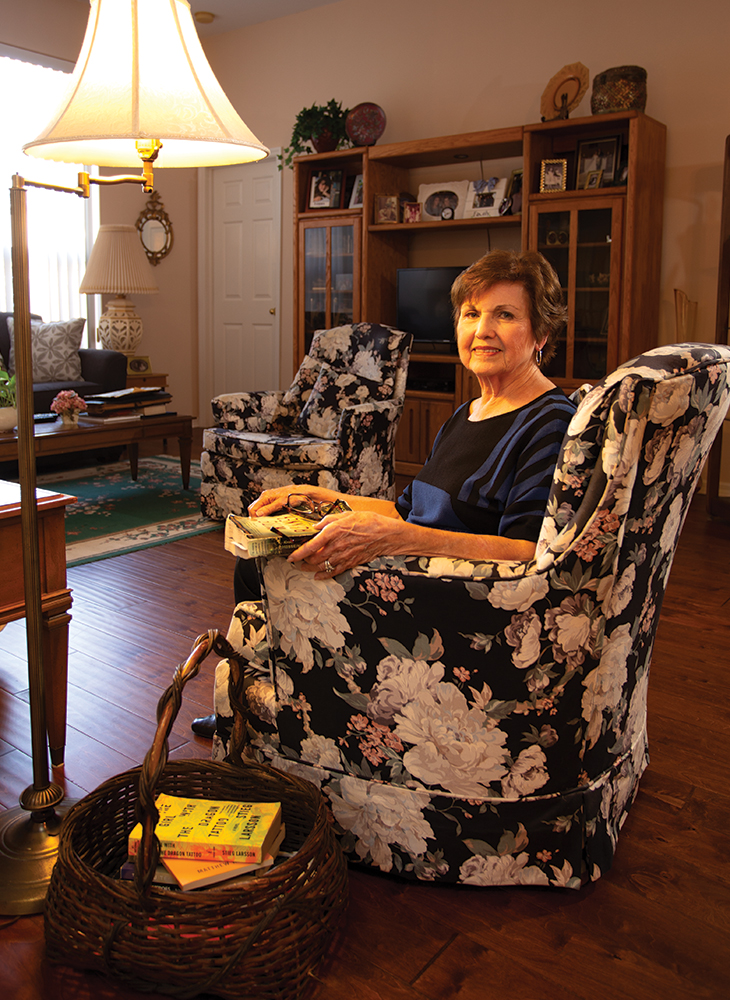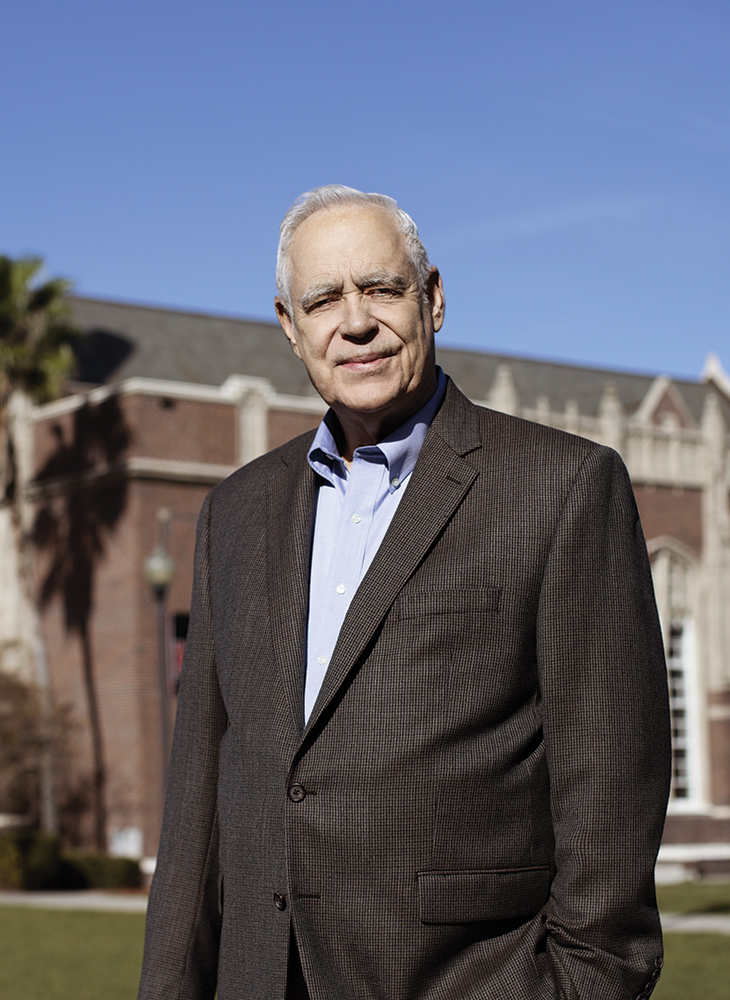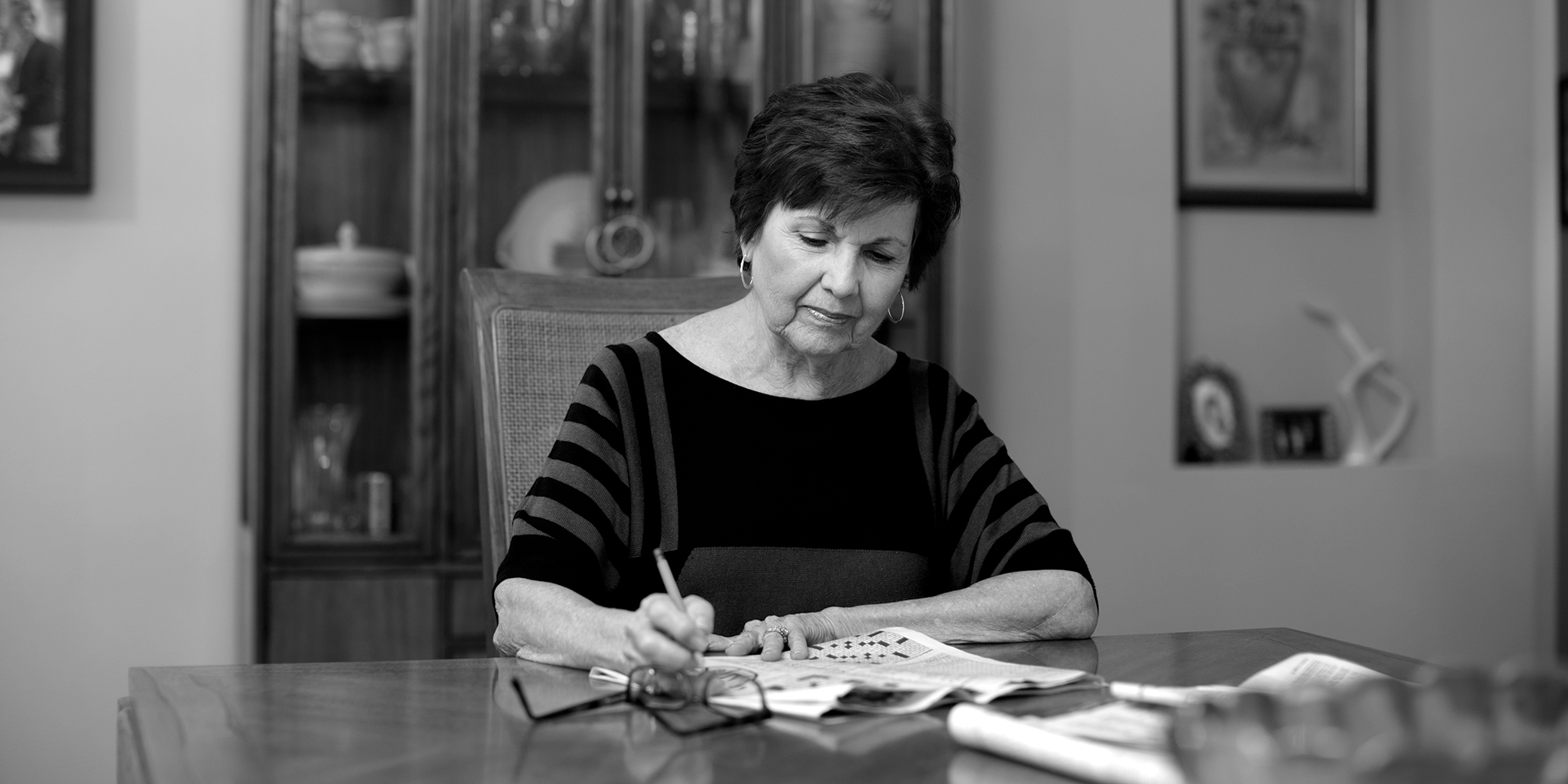Compared with other big American cities, Tampa is quite youthful at 132 years old. But its history is still rich with the stories of its earliest inhabitants and the newcomers who have propelled the city’s growth. TAMPA Magazine is sharing glimpses into Tampa’s past as told by three of its children, each of whom have lived in the city since birth. In their stories on the following pages, these individuals illuminate how a patchwork of backgrounds and identities have fused to become a city — and what it means to be a true Tampeño.

Wally Reyes
Wally Reyes was born right as Tampa approached a crossroads. He grew up in Tampa Heights, but his family owned the Gonzalez Habano Cigar Company (formerly Gonzalez Fisher, and the creators of the famous Tampa Girl cigar), so he spent much of his time in Ybor City.
Like many American neighborhoods deemed “unsatisfactory” at the time, Ybor was undergoing a process known as urban renewal when Reyes was growing up in the late 1950s and early 1960s. The name was ironic, as the policies meant to implement the renewal led to businesses closing, residents fleeing to outlying neighborhoods, and houses being demolished. “Ybor City, then, was considered a bad neighborhood,” Reyes recalls. His family would pick up tobacco for their factory from a depot on Palm Avenue, and he would come along to ride his bike with the neighborhood kids around the streets of Ybor as the workers loaded the trucks. “Basically what we did [was] play in the debris of broken houses — Cowboys and Indians or something like that. There was not much to see in Ybor City at the time.”
As a child, Reyes would spend his days wandering around his family’s factory — sometimes to the chagrin of his parents, who worried their son would pick up some of the employees’ coarser language. But the factory was also where he nurtured his love of learning, particularly about history. Reyes eventually earned a master’s degree in history and a Ph.D. in social anthropology. He’s now one of the city’s preeminent Ybor City historians.
“[A love of] history is like a little bug you have inside of you,” he says. “I was always inquiring about things. When I was in the factory, I was inquiring about how cigars are made and where the tobacco was coming from. Then when they told me the country, I’d look [it up] in the atlas. I was always inquisitive, finding out more and more.”
Like the neighborhood, Ybor’s cigar factories were on the verge of massive changes, too. Reyes had a front-row seat to the drastic shifts in Tampa’s cigar industry after World War II. In the industry’s early days, factory owners and workers alike made a good living. Reyes describes his childhood neighborhood as mostly middle-class and upper-middle-class families, and his college tuition was covered by a trust fund his grandfather had set up (in addition to his work as a historian, Reyes has also worked in the family business for years — “repaying the cost of my education to the company,” he says).
Thanks to a confluence of factors — including a lack of hand-rollers, a market-wide shift toward cheaper cigarettes, and a nearly 700% increase on a cigar’s excise tax — the Gonzalez Habano Cigar Company relocated to Honduras in 2008, 90 years after Reyes’s great-grandfather started the business. Today, every one of Tampa’s original cigar companies have either closed or moved their operations overseas, with the exception of the J.C. Newman Cigar Company.
“Life in Ybor City has changed so much,” Reyes acknowledges, especially when looked at from 10,000 feet. But having actually lived through it, the differences feel less intense.
“In general, in Ybor City and the city of Tampa, everything has been [changing] gradually, and that’s what I like,” he says. “The changes haven’t been drastic.”
The changes he’d still like to see in Ybor? Simple: a supermarket. A pharmacy. And, the one that gives him a moony look in his eye, a streetcar that runs from Ybor to the airport.
“That is my dream, and it will come,” Reyes says. He pauses. “Someday it will come.”

Mildred Guida
As she flips past images of herself from her elementary school years in her scrapbook, Mildred Guida sighs. “I didn’t realize I was growing up in such a wonderful, wonderful time,” she says.
Now 80, Guida grew up on 22nd Avenue, along the border of Ybor City and Tampa Heights. She recalls a diverse neighborhood of hard-working Spanish, Italian, Jewish and white families who lived simply. Tampa, now a major city on the rise, felt like a small town.
“We rode the bus to go downtown and come back. We had the neighborhood theatres and neighborhood grocery stores,” Guida says. “At night, we used to take walks. There was a drugstore on the corner of Nebraska and Floribraska. We’d stop and get an ice cream cone then walk home with the whole family. You did things together.”
As a child, school was the center of Guida’s world. She went from the former Robert E. Lee Elementary to George Washington Junior High to Jefferson High (“the old Jefferson,” she clarifies, as anyone who attended Jefferson before it moved to its current location is wont to do). Guida has kept an extensive photographic record of her school years, which gives a peek into Tampa schools in the mid-20th century.
There she is in 1951, when she was selected to be the queen of the school district’s May Festival, held each spring at Plant Field (now part of the University of Tampa’s athletic facilities along Kennedy and North Boulevards). A slightly newer photo of Tampa’s four high school student council presidents — including Guida — is a reminder that, for years, Plant, Hillsborough and Jefferson were the city’s only secondary schools, joined by Chamberlain when Guida was a teenager.
College was an option for women by the time Guida graduated from high school, but her mother shut that idea down right away.
“My father asked me if I wanted to go on to school, but my mother answered for me,” Guida recalls. “She said, ‘No, she wants to be a secretary.’ That was the big thing [for women].”
Guida repeatedly circles back to the idea of life in Tampa being slower. Instead of hopping in the car to pick something up in Ybor City or do holiday shopping at the downtown department stores, you walked or rode the bus. Before the Tampa segment of I-75 opened in the mid-1960s, Guida and her husband would take the train that ran from Tampa’s Union Station to Gainesville with a pack of fellow football fans to see the Florida Gators play.
“We used to dress up and get on the train with a bunch of people,” she says. “We’d go to Gainesville, see the game, and get back on the train to come back to Tampa.”
Guida says she’s amazed by how much Tampa has changed, especially by how lively the downtown area has become. But she admits that it’s ever so slightly bittersweet.
“I’d like [the city] to go back where it was,” Guida says with a laugh. “I miss it, but this is good for Tampa. It’s good for the city to be so large and developed with so many activities.”

Michael Caballero
According to Michael Caballero, there was no such thing as a stranger when he was growing up in West Tampa. He recalls his mother interrogating him about his whereabouts after his walk home from school took longer than anticipated.
“She would say, ‘Where were you?’” he recalls. “I would say, well, I’m walking along, and [a neighbor would see me and say], ‘I just baked some cookies! Come on in, I’ll give you some cookies and milk.’ Well, guess what? I’d go in and get cookies and milk.”
“Anywhere you walked in West Tampa, people either knew you or they knew your family,” Caballero says. “It was one of the things that, as the city gets big, you lose.”
Equally lost are the days when Caballero’s mother would pack a lunch for him to eat while he watched two movies, a couple of cartoons, and a serial film for 25 cents at the Westown Theatre on the corner of Spruce Street and Howard Avenue. Also gone, thankfully, are the days spent living with his mother, father, aunt and uncle without air conditioning. Caballero recalls that last one with a wince.
At 77, Caballero is old enough to have felt the impact of Tampa’s cigar industry firsthand, despite not hailing from a cigar-making family. The factories’ chain of command (Spanish management with Cuban and Italian workers) influenced language patterns in the city. In his house, that meant Caballero’s Sicilian mother learned Spanish, but his Spanish-Cuban father did not know Italian. It also meant Caballero did not learn English until he began grade school.
“When I was in school, if they caught you speaking Spanish, they suspended you,” he says. “Not for a long time, but maybe for a day or two. They wanted to make sure you were able to speak English. [Immersion in the language] did help you learn.”
In school, Caballero excelled in mathematics. He was in the the University of South Florida’s first class — where he paid all of $112 per semester of coursework — studying engineering. Eventually he pivoted to a math major and transferred to Florida State’s more established program to finish his degree. As he finished his master’s degree in the subject, a dean of Caballero’s alma mater, Jefferson High School, convinced him to give teaching a try.
He ended up teaching at three schools for a total of 46 years, plus adjunct gigs at Hillsborough Community College and USF. Caballero spent most of his time at Tampa’s first high school, Hillsborough High, where he was the county’s first International Baccalaureate (IB) program math teacher. “Teaching was great. I loved it,” Caballero says. “I enjoyed the interaction with the kids.”
Then he thinks for a second. “I don’t know if they liked me. They must have liked me, I guess, because they didn’t give me any hassle.”
Even if they did give him a hassle, Caballero could surely handle it. He and his wife of 52 years, Kate (at left in the photo below), are the proud parents of 10 children and grandparents of 28 grandchildren.
“We’ve been extremely fortunate, especially when thinking we did it on a teacher’s salary,” Caballero says. “But that was a decision we made.”
The couple did all they could to raise their kids in the same tight-knit way they both grew up, from serving dinner at 4:30 p.m. so they could all eat together before Caballero had to teach a night class at HCC to packing the entire brood in their oversized van to go to one child’s sporting event. Despite being an only child, Caballero says he felt a similar type of support system growing up in West Tampa. While Tampa has gotten too big to replicate that exact environment, he thinks creating more connections between neighbors will only benefit the city as it grows.
“It was nice to grow up in an area where everyone knew the people in their neighborhood and felt that they would watch out for each other and the kids,” he says. “I felt that West Tampa was part of my family.”



